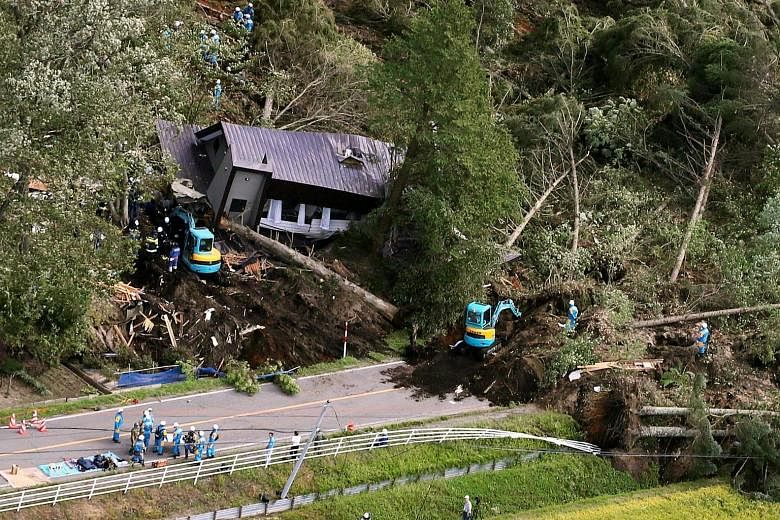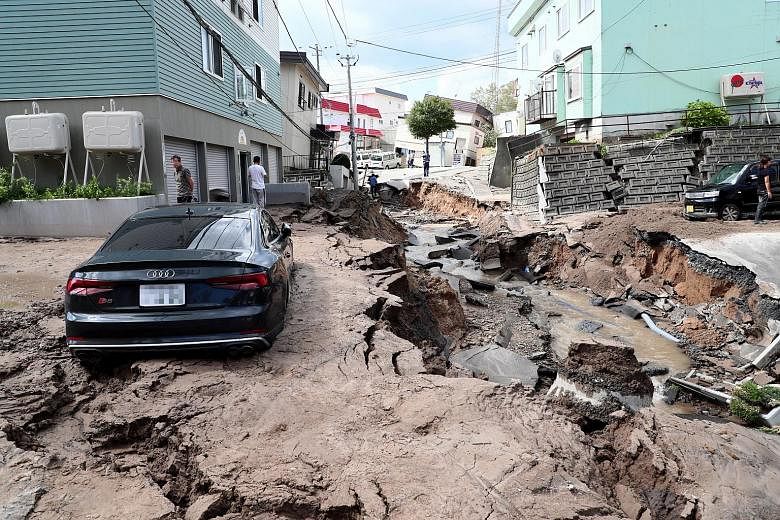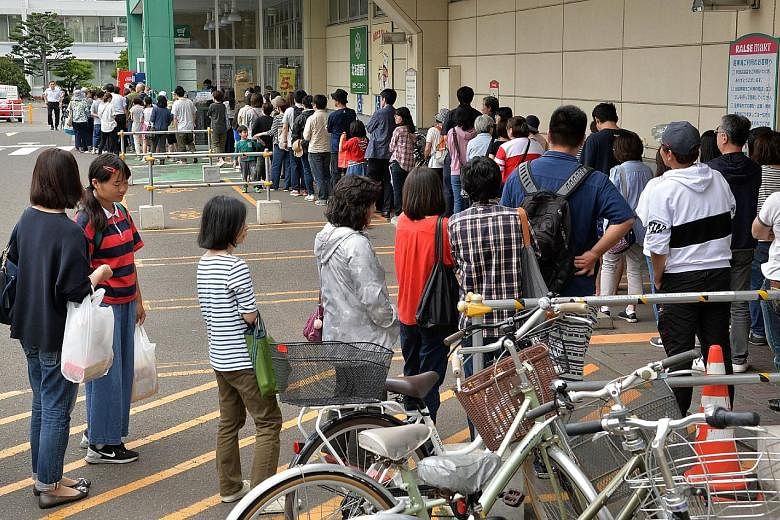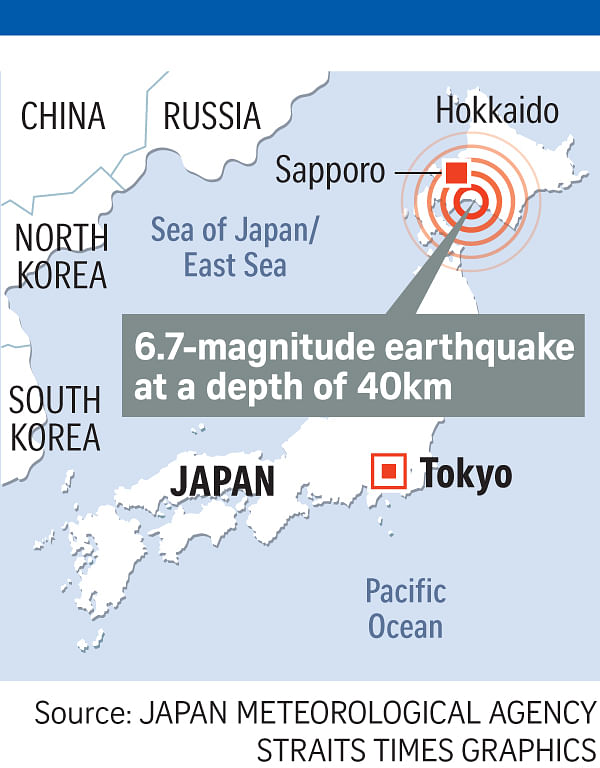Much of Hokkaido remained in darkness last night, more than 18 hours after a powerful earthquake shook Japan's northernmost island and cut power to all 2.95 million homes in the prefecture.
The magnitude-6.7 quake, which hit at 3.08am yesterday (2.08am in Singapore), killed at least 11 people and injured 300 others.
Some 32 people are still missing, all of them residents of the mountainous town of Atsuma, where dramatic news pictures showed entire homes flattened by mudslides.
The tremor struck at a depth of 40km, with an epicentre 68km south-east of Sapporo, the Japan Meteorological Agency (JMA) said.
The JMA warned of the possibility of aftershocks of a similar magnitude over the next week. Around 85 aftershocks measuring at least magnitude-2.5 had been registered as at 11.45pm.
The weatherman has also said there could be more landslides, with rain expected over large areas of Hokkaido today.
This is the second major natural disaster to hit Japan in days, disrupting economic activity in the country's northern and western hubs.
The country is still grappling to recover from the strongest typhoon to have battered it since 1993.
Typhoon Jebi, which made landfall on Tuesday in the Kansai region, left at least 11 dead and 600 injured. It flooded the Kansai Airport - Japan's third busiest airport in passenger traffic - forcing its closure since Tuesday.
Prime Minister Shinzo Abe said that domestic flights will resume today, with international flights to follow "as soon as possible".
Yesterday's tremor also shut the New Chitose Airport - Hokkaido's main airport and Japan's fifth busiest. Airport officials were hopeful that flights would be able to resume by today.
Shinkansen bullet train services connecting Hokkaido to Aomori, the northernmost prefecture on the main island of Honshu, were also halted, effectively severing two major public transport modes that link Hokkaido to the rest of the country. Subway services in Sapporo also stopped, as did train services throughout Hokkaido.
Water was cut off to at least 300,000 homes, with long lines forming outside the few convenience stores that were open as residents stocked up on provisions.
Efforts to restore power and utilities are under way, but Economy, Trade and Industry Minister Hiroshige Seko said that it may take "at least a week for electricity to be fully restored".
Mr Abe said that power will be restored to about one million households by this morning, and that up to 25,000 Self-Defence Force (SDF) personnel may be activated for relief operations.
Owing to the earthquake, the Defence Ministry said last night that a scheduled joint drill with Australian troops from Wednesday to Sept 30 has been cancelled.
The tremor was retroactively upgraded from an upper six to the maximum seven on the seven-point Japanese "shindo" seismic intensity scale, which measures quakes by their impact on the public and not by geology.
Dr Wang Yu, a visiting scientist at the Earth Observatory of Singapore, told The Straits Times that Japan "sits on a tectonically active zone that is deeply affected by the interaction between the North American and the Pacific plates".
The epicentre of yesterday's quake was "almost right beneath the area covered by thick and young alluvial sediment that can amplify ground-shaking, causing extensive... landslides on that part of the island."





